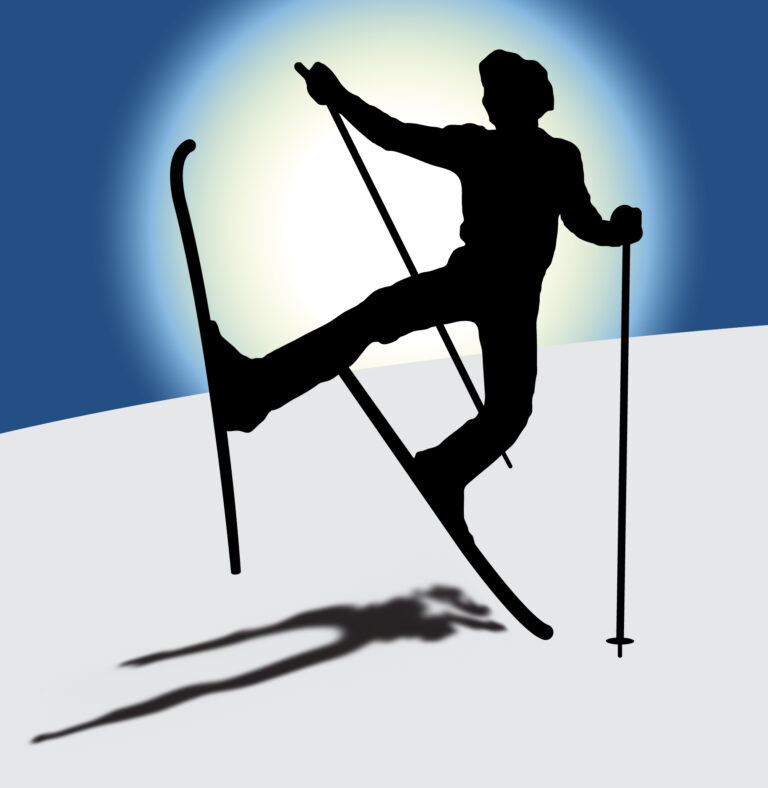General Rules of Telemark Skiing
So, you've decided to take on the world of telemark skiing. As you glide down the slopes with grace and finesse, have you truly mastered the art of this unique skiing style? From your stance to the equipment you choose, there are key rules to follow that can elevate your telemark skiing game to the next level. But before you hit the slopes, make sure you're well-versed in the general rules that can make or break your telemark skiing experience.
Proper Telemark Stance
To achieve the proper Telemark stance, bend your lead knee forward while keeping your trailing leg straight behind you. This position is crucial for maintaining balance while executing turns and maneuvers on challenging terrain. By distributing your weight evenly between both skis and engaging your core muscles, you can enhance stability and control.
When initiating a Telemark turn, focus on shifting your weight slightly forward onto the lead ski while keeping your chest up and facing downhill. This movement helps you establish a strong connection with the snow and maintains your center of gravity in a balanced position. To further improve your balance techniques, practice flexing and extending your lead leg throughout the turn to adapt to changing terrain conditions.
Remember that proper weight distribution and alignment are key factors in achieving a fluid and efficient Telemark skiing technique. By mastering the Telemark stance and incorporating these balance techniques into your skiing style, you can experience a sense of freedom and empowerment on the slopes.
Equipment and Gear Essentials
Maintain optimal performance on the slopes by ensuring you have the essential equipment and gear necessary for Telemark skiing. When it comes to Telemark skiing, having the right gear can significantly impact your experience. Start with your boots; they should provide both comfort and control. Look for brands known for their Telemark-specific models, offering the latest trends in design and technology. Proper binding setup is crucial for performance and safety. Consider adjustments for a personalized fit and optimal power transfer. Skis tailored for Telemark skiing are wider and more flexible than traditional alpine skis, providing stability and maneuverability. Regular gear maintenance is key to prolonging the lifespan of your equipment. Keep an eye on wear and tear, and invest in customization when needed. By staying informed about the best brands and latest trends in Telemark gear, you can ensure you're well-equipped to tackle the slopes with confidence.
Mastering the Telemark Turn
Achieving mastery in the Telemark turn requires precise weight distribution and fluid movements to navigate slopes effectively. To excel in this technique, focus on the following key aspects:
- Weight Distribution: Proper weight distribution is crucial in Telemark skiing. Shift your weight smoothly from one ski to the other while keeping your body centered and balanced.
- Edging Techniques: Mastering edging techniques is essential for executing smooth Telemark turns. Practice engaging the edges of your skis effectively to control your speed and direction.
- Flexibility and Range of Motion: Telemark skiing demands a wide range of motion. Stay flexible in your ankles, knees, and hips to achieve the deep knee bend required for this style.
- Smooth Transitions: Work on seamless transitions between turns. Focus on maintaining a continuous flow of movement without abrupt stops or jerky motions.
Safety Measures on the Slopes
Ensuring your safety on the slopes requires strict adherence to proper equipment usage and awareness of your surroundings at all times. Avalanche awareness is crucial when telemark skiing. Before venturing out, check the avalanche forecast and carry necessary safety gear such as a beacon, shovel, and probe. Be prepared to execute emergency procedures if caught in an avalanche.
Injury prevention is paramount. Always warm up before skiing to prevent muscle strains and injuries. Ensure your bindings are correctly adjusted to reduce the risk of knee injuries. Familiarize yourself with first aid techniques; knowing how to stabilize a sprain or manage minor cuts can be essential in remote skiing locations.
Maintain a safe distance from other skiers to avoid collisions. Stay on marked trails and respect all signs and boundaries. Be mindful of changing weather conditions and how they may affect the terrain. By prioritizing safety measures and being prepared for emergencies, you can fully enjoy the liberating experience of telemark skiing.
Etiquette for Telemark Skiers
To enhance the skiing experience for yourself and others, understanding and following proper etiquette as a telemark skier is essential. When hitting the slopes, your behavior can impact not only your enjoyment but also that of fellow skiers. Here are some key points to keep in mind regarding telemark skiing etiquette and slope behavior:
- Respect Uphill Skiers: Yield to uphill skiers when making your descent, as they have the right of way. Be mindful of their path and avoid cutting them off.
- Control Your Speed: Maintain a safe speed at all times, especially in crowded areas or narrow trails. This helps prevent accidents and ensures a smoother flow on the slopes.
- Communicate Effectively: Use clear signals and gestures to communicate with other skiers, especially when passing or merging onto a new trail. This promotes better coordination and reduces the risk of collisions.
- Leave No Trace: Respect the environment by not littering and following designated paths. Help preserve the beauty of the slopes for future skiers to enjoy.
Frequently Asked Questions
What Are Some Common Mistakes Beginners Make When Learning Telemark Skiing?
When you start telemark skiing, avoid common mistakes like leaning back, not bending your knees enough, or using improper gear setup. Focus on proper technique, follow learning progression, and ensure correct equipment alignment.
How Can I Improve My Balance and Stability While Telemark Skiing?
To enhance your balance and stability in telemark skiing, focus on core strength through stability exercises and flexibility training. Engage in balance drills to improve control. These practices will refine your technique and boost performance.
Are There Any Specific Exercises or Drills I Can Do to Enhance My Telemark Skiing Skills?
To enhance your telemark skiing skills, focus on strength training and flexibility with exercises like squats and lunges. Incorporate technique drills to master progression levels. Consistent practice and dedication will lead to improvement.
What Should I Do if I Encounter Icy or Challenging Terrain While Telemark Skiing?
When facing icy or challenging terrain while telemark skiing, prioritize safety. Ensure equipment maintenance for stability. Utilize advanced techniques like angulation and weight shifting to navigate tricky conditions with confidence. Stay focused, adaptable, and in control.
How Can I Prevent Injuries While Telemark Skiing and Ensure a Safe Experience on the Slopes?
To prevent injuries and ensure a safe telemark skiing experience, focus on equipment maintenance and having proper safety gear. Stay aware of the terrain, adjust your technique accordingly, and prioritize injury prevention for a liberating time on the slopes.






